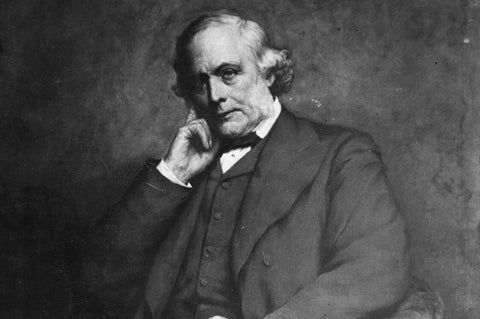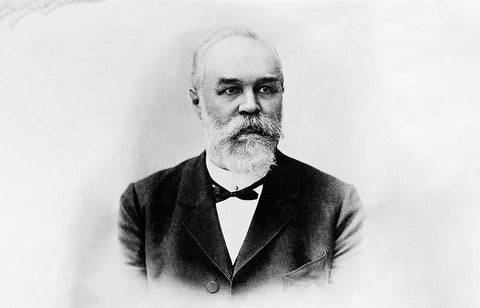A Brief History of the Hand Sanitizer

What is a hand sanitizer?
A hand sanitizer is a liquid, gel or foam-based solution, usually containing 60-95% alcohol v/v, that is used to reduce infectious agents on human hands without access to water.
Who invented the hand sanitizer?
Many of us may have heard the unverified online story about the invention of the modern hand sanitizer. As per the story, in 1966, a nursing student named Lupe Hernandez from Bakersfield, California, discovered that alcohol could be delivered in a gel form. Recognising the commercial potential of her idea, she called an inventions hotline she had heard about on television and went about registering a patent. The most common source cited is an article in The Guardian published in 2012.
This story was further investigated by the The Lemelson Center for the Study of Invention and Innovation at the Smithsonian National Museum of American History. And, so far, it does seem, that the story that has been perpetuated is incorrect. Alcohol in the gel form was discovered and known much before 1966.
US Patent 899,875, issued to Hans Kuzel in 1908, specifically mentions the term “alcogel”. And so does US Patent 2,054,989, “Compositions for Application to the Skin,” issued to William C. Moore in 1936. Moore’s patent details “a new kind of predominantly alcoholic composition for application to the human skin” and it also mentions that “it has long been known that 'alcogels' can be made.” Moore's new form of alcohol in “non-liquid form” was intended to be used as an easier-to-apply rubbing alcohol compound for massage and other therapeutic uses.
Milestones in the Development of the Hand Sanitizer
1842 |
Dr. Ignaz Semmelweis (1818-1865) is known as the father of hand-washing At the obstetrical clinic in Vienna, the German-Hungarian physician Ignaz Semmelweis, ordered the use of chlorinated lime solution for hand washing. The mortality rate due to child-bed fever dropped from 18% to 2%. |
1862 |
French biologist, microbiologist, and chemist Louis Pasteur was a pioneer of disinfection. Frenchman Louis Pasteur proved that bacteria can only evolve from existing bacterial cells and not from inanimate matter. The chemist developed and pioneered the procedures of disinfection, sterilisation and pasteurisation. |
1865 |
Sir Joseph Lister - a British surgeon and a pioneer of antiseptic surgery Sir Joseph Lister conclude from Pasteur’s findings that bacteria must also be responsible for poor wound healing. His remedy: carbolic acid to disinfect the air and the hands, and to soak dressings before covering wounds. |
1875 |
The first major discovery of a non-water, non-soap cleaning agent. Leonid Bucholz of what is now the University of Tartu in Estonia apparently discovered that ethanol — a form of alcohol — has antiseptic properties. |
1876 |
German physician Robert Koch: one of the main founders of bacteriology In 1876, Robert Koch detected anthrax spores and, in 1882, tuberculosis bacteria. As Professor of Hygiene at the newly founded hygiene institute at Berlin University, he turned Bacteriology into a respected science. The RKI guidelines on hygiene named after Robert Koch still shape the daily routine in clinics to this day. |
1903 |
Studies by Harrington and Walker (1903) conclude that 50-70% ethanol concentration have higher efficacy against bacteria than 80-90% ethanol concentrations. Another study by Beyer (1911) arrives at a similar conclusion. |
1905 |
Carl Flügge was a German bacteriologist and hygienist Carl Flügge, Koch’s successor, introduced the distinction between hygienic and surgical hand disinfection. Scrubbing the hands with soap and a brush for several minutes became standard practice for surgeons. |
1929 |
Scottish physician and microbiologist Sir Alexander Fleming The Scottish microbiologist Sir Alexander Fleming discovered penicillin, thereby laying the groundwork for modern-day antibiotics. Around 60% of nosocomial infections can be attributed to resistant microbes. |
1941 |
Lucas P. Kyrides, US Patent 2,246,524, “Germicide,” 1941, details compounds that are “eminently suitable for washing textiles, rubber goods, walls and floors and especially for washing hands and skin.” |
1946 |
Husband-and-wife team Goldie and Jerome “Jerry” Lippman found a company called GOJO and launch the GOJO hand cleaner - an industrial orange-smelling petroleum-based cleaner for auto repair shops and other places to remove people get grease from hands. In 1955, Jerry receives US Patent 2,700,490 for first-ever portion-control liquid dispenser. |
1950 |
In his study titled, The Relationship of Concentration and Germicidal Efficiency of Ethyl Alcohol, Harry E. Morton makes the case for higher concentrations of Ethyl Alcohol translating directly to the solution’s Germicidal Efficiency. Morton points flaws in previous studies that had concluded 95 percent ethyl alcohol is not a good disinfectant. |
1957 |
Lincoln L. Stevenson receives US Patent 2,814,081 for a "Rapid Hand Sanitizer". He describes this as "a device for quickly and efficiently rendering the hands sanitary". Lincoln’s rapid hand sanitizer was a glass box with "an electrically operated fine spray device and a hot air blower-drier" for cleaning the hands in "a very few seconds". The spray would be a "compound including lanolin, pure grain alcohol, perfume, and possibly a slight amount of additional disinfectant added if necessary." |
1965 |
In Germany, Peter Kalmár, a surgical physician assistant at the University Medical Center in Hamburg, Germany, invents a product called Sterillium - perhaps the first alcohol-based yet skin-friendly hand disinfectant that was simply rubbed into the hands. The same year, US Patent 3,220,424 was issued to Warren W. Nelson in 1965 for a "Hand Sanitizer". Nelson’s invention comprised a box with an opening “to expose substantially all of the skin area of the hands to the sanitizing fluid contained within the receptacle.” The “complete submersion of the person's hands in the sanitizing fluid,” regulated by “an electric and adjustable timer,” provided the necessary sanitizing. |
1990 |
US Patent 4,956,170, issued to Andrew S. Lee in 1990 for “Skin Moisturizing/Conditioning Antimicrobial Alcoholic Gels.” His invention “relates to an antimicrobial alcoholic gel composition for disinfecting the hands which also possesses moisturizing and conditioning agents to counter the drying effects of the alcohol on the skin.” |
1997 |
GOJO launches the Purell Hand Sanitizer - a viscous isopropyl alcohol-based hand sanitizer, laced with anti-microbials and other chemicals to make the product more gentle on the delicate skin of the hands. |
2000 |
Prof. Didier Pittet, an infectious diseases specialist at Geneva University Hospitals, publishes a paper in The Lancet detailing the use of alcohol-based hand disinfection to prevent cross infection in hospitals. In the 1990s, Pittet had worked with a colleague, British pharmacist William Griffiths, to develop a 75% alcohol-based hand rub. And his work in Geneva had demonstrated that hand hygiene could save lives in hospitals. |
2002 |
The Centers for Disease Control and Prevention publicized the effectiveness of alcohol-based sanitizers, following which the United States Army tested and then began the wide use of hand sanitizers. |
2009 |
Prof. Didier Pittet writes new WHO guidelines promoting the use of alcohol-based hand sanitizers among healthcare professionals, especially in the absence of clean water. In the same year, hand sanitizer sales see a huge spike in the wake of the H1N1 swine flu that killed an estimated 150,000 to 600,000 people around the world. |









